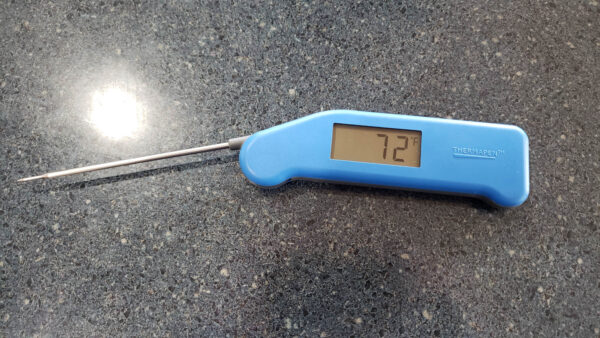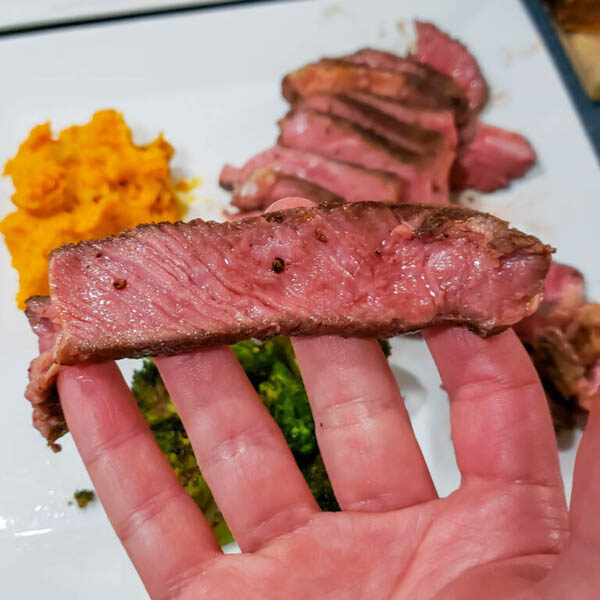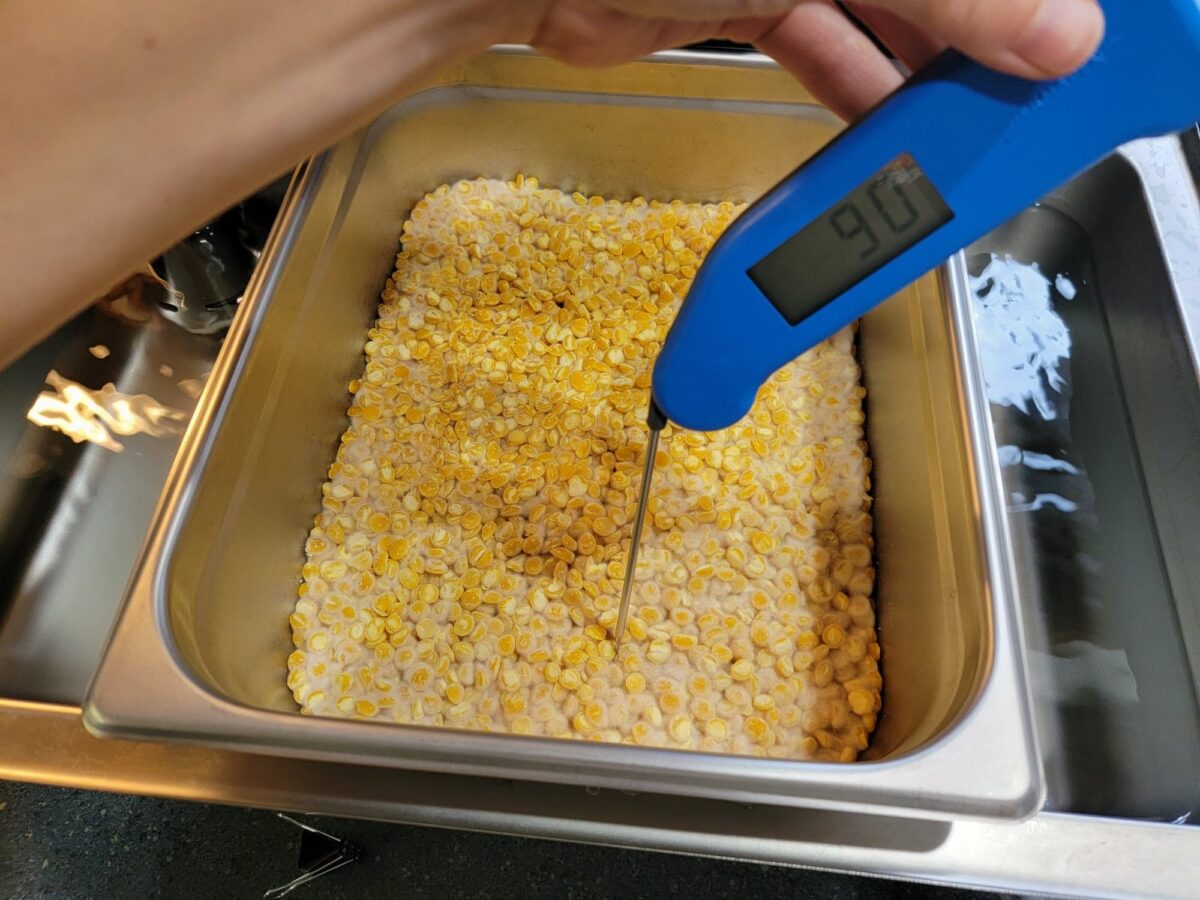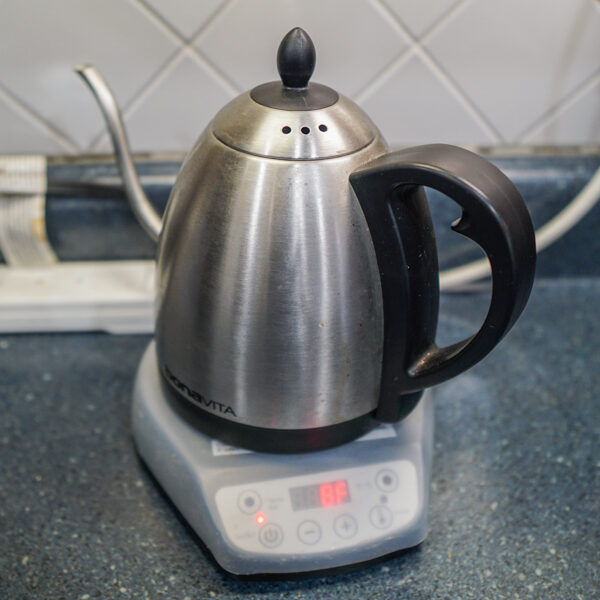Disclaimers: Our site uses demographic data, email opt-ins, display advertising, and affiliate links. Please check out our Terms and Conditions for more information.
When we first picked up an instant-read thermometer for our kitchen, we thought it'd be a handy gadget to measure the temperature of meat and seafood to help us get a better cook every time.
But, as it turns out, these devices are quite handy and can be used for an array of applications in the kitchen, and our thermometer has become one of our most used products.
So if you are thinking of picking up an instant-read thermometer but want more ideas of how to use it, we've got you covered!
Cooking Seafood and Meat to Desired Finish
When we cook animal products, like steak, chicken, or fish, we often speak on two scales.
The first is the degree of doneness, like raw, rare, medium rare, medium, medium well, and well done. The other is a numerical term corresponding with each, relative to your protein of choice's internal temperature (medium rare steak is often cooked to a final internal temperature of 130-135 °F, medium rare salmon may range anywhere from 120-135 °F depending on how it was sourced, processed, and stored).
There are all manner of tricks to determine when your meat or seafood has reached its ideal finish (such as a finger test with steak), but there is none more repeatable than simply measuring the internal temperature with an instant-read thermometer!
Simply poke the thermometer into your meat or seafood, check the temperature at the midpoint (often at the thickest spot), and you are good to go every time. Just be sure to account for the fact that most meats will continue rising a few degrees internally after you take it off the heat source, too!
Tempering Chocolate and Making Candy
When it comes to tempering chocolate and making other forms of sugar-based candy, you'll quickly go down a temperature rabbit hole. On the sugar front, for example, there are candy stages of thread (around 230 °F), soft ball (234 °F), firm ball (244 °F), and many more all the way to caramelization (around 320-340 °F).
Suffice it to say, if you are working on a recipe that requires you to maintain a firm ball temperature, precision is key. Well, an instant-read thermometer will give you just that!
That said, in this particular instance, perhaps buying a dedicated candy thermometer may be a better option. This is because these tools typically hook onto the side of your vessel and measure the temperature continuously when instant-read thermometer options often do not have such a clip. That said, having both is always a good solution!
Checking Water Temperature for Tea and Coffee
When making tea and coffee, odds are good you will have directions that offer ideal brewing conditions based on temperature. As science intersects brewing methodology, this is simply going to become more and more prominent as the years go by, too.
As such, for those who do not have a kettle with temperature set points, like our Fellow kettle, having an instant-read thermometer on hand is a solid alternative. Simply boil water, pour it into your brewing vessel, let cool, and start brewing when the desired temperature has been reached.
Is this a bit more manual of a process? Absolutely, but it works all the same.
- On the flip side, you can also use these thermometers to measure temperatures of liquids to ensure that they are at safe drinking temperatures and not too hot!
Monitoring Fry Oil Temperature to Desired Level
Much like having an ideal sugar temperature for making candy, the same is true when frying foods in oil. Fry too cool, and your batter may not crisp up properly. Fry too hot, and you risk burning your dish beyond recognition.
The reason this is an issue is simply because many fry oils can heat far, far higher than the ideal frying range of 325-375 °F. Then you also have the issue that cold or cool food going into a fryer can also significantly lower the temperature, and you can see how it becomes a balancing act around temperature all around.
This is another instance where a clip-on candy thermometer may be a good choice for continuous readouts of temperature, but in a pinch, an instant-read thermometer can be popped into the fry oil for a spot check.
Checking that a Baked Good is Finished
If you are a baker, odds are good you have learned numerous tricks to tell when your cakes, breads, and other baked goods are finished- the most common being putting a toothpick in and checking for doneness. But did you know you can also check based on temperature?
Although this one does vary based on the baked good, most range between 200-210 °F. Recipes specifying this may be a bit less common than other cooks mentioned in this article, but once you get a feel for any given recipe based on temperature, you can repeat it again, and again, and again.
As a bonus? If you aren't so sure, you can also use the probe as a defacto toothpick for a check when you pull it out!
Maintaining Fermentation Temperatures
For those who are getting into fermentation, be it brewing wine or beer, culturing koji or tempeh, or even just activating yeast for baking, temperature is a key element across the board.
The simplest explanation here is that most fermentations rely on fungi to work. Beer is brewed with the yeast strain Saccharomyces cerevisiae. Koji uses Aspergillus oryzae. Other ferments may use other strains.
Fungi is, as you likely know, a living organism. Much like other living organisms, they are sensitive to heat. Too low a temperature and fermentation may slow or outright cease, and too high a temperature and you risk killing them outright. So stay within the recommended boundaries by checking them with an instant-read thermometer!
Calibrating Temperatures Across Devices
One final use of an instant-read thermometer is simply to calibrate your temperature settings across devices. Do you really know the temperature of your refrigerator? Check some milk or a glass of water that has been in it overnight. Is your electric kettle reaching the setpoint it says? Check with the thermometer. Heck, although most instant-read thermometers are best in a liquid or semi-solid material (read: food), it does a pretty decent job of simply checking air temperature, too!
The only thing worth highlighting here is that these thermometers are not indestructible. Although the metal probe can measure a considerably large range of temperatures, the plastic casing and internal workings are often not rated for high temperatures.
As such, keep this in mind when calibrating temperatures across devices. You may be able to measure the internal temperature of a steak or a rather hot pot of fry oil, but don't go sticking the entire device in your oven at 450 °F or, conversely, in your freezer at -5 °F. Otherwise, you may be buying a new one completely.
Overall, there are many great uses for an instant-read thermometer in the kitchen. So if you have been on the edge of deciding to buy one, you now have a few more ideas for how to use it!
Do you have a favorite way to use an instant thermometer? Comment below to share!







